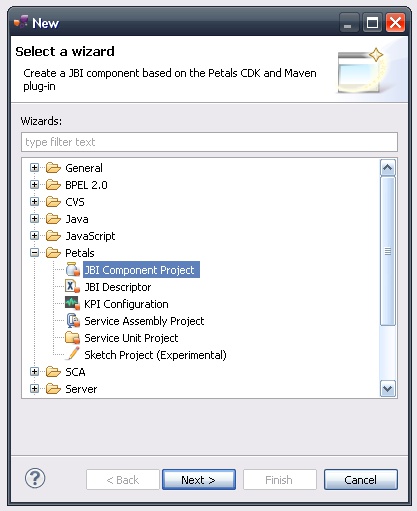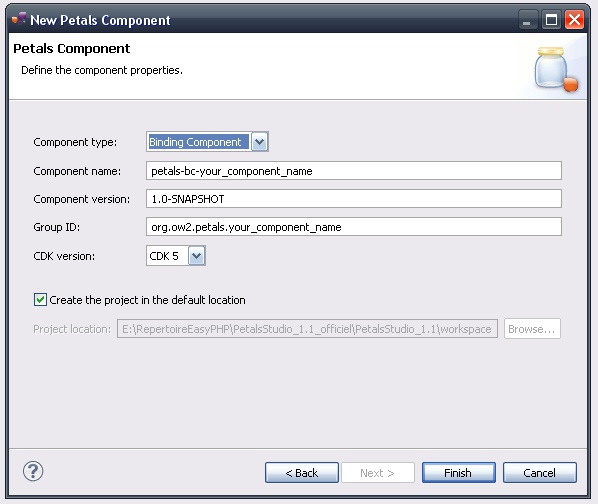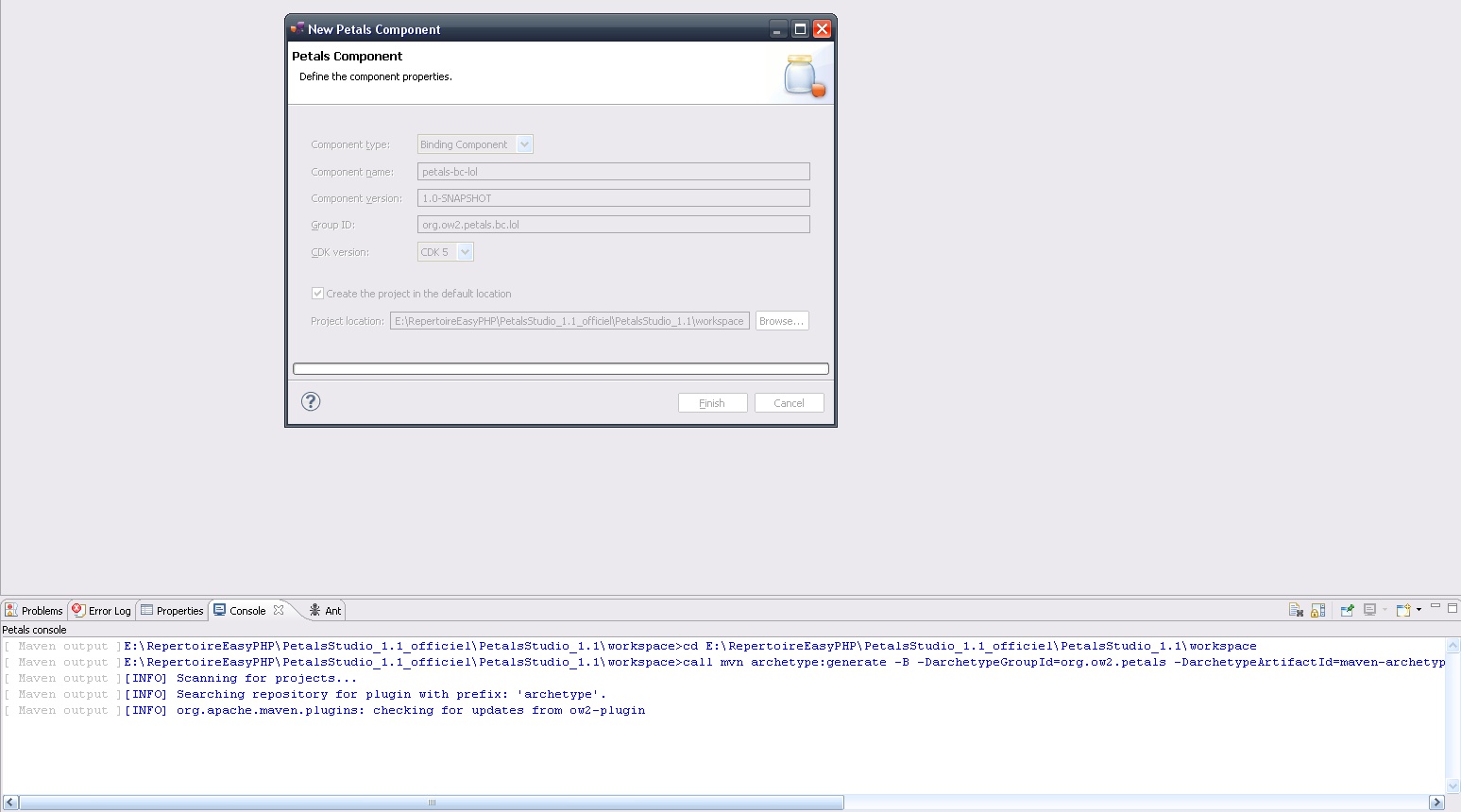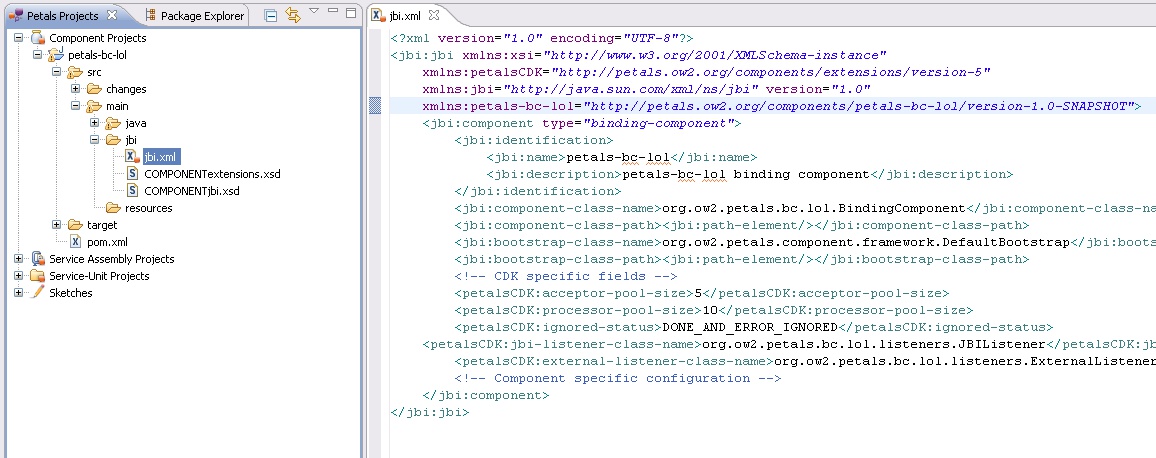|
Among the different artifacts that Petals supports, the Petals components represent an essential brick, as an extension of the platform. |
Table of contents |
Definition
Petals ESB is a JBI container (JBI being a Java specification).
As a container, it supports the deployment of JBI components.
Examples of such components include the Petals SOAP component, the Petals BPEL component, and many more.
| The notion of container and component is well-known in Computer Science and Software.
EJBs are JEE components, and need to run in a JEE container (this is the core of a JEE application server). From this point of view, JBI (and so Petals ESB) is completely similar to other component models. |
However, existing component may not be emough. People may feel the need to create their own Petals component.
Generally, creating Petals components is achieved using Maven. Therefore, the initial choice to create a component is the command line.
Another solution is to go through the studio.
The studio provides a creation wizard that acts as a front-end for the Petals Maven plug-in.
You can find more information about component development on [Petals ESB's wiki].
Creation with the studio
This wizard requires you to have installed and configured Maven.
It is a shortcut to use the Petals Maven plug-in for the creation of a Petals component.
Select File > New > Petals > Component project and click Next.

This creation wizard has only one page.

Select the component type (binding component - BC - or service engine - SE).
Component names respect a naming convention.
- petals-bc-* for a Binding Component.
- petals-se-* for a Service Engine.
Complete the suffix of the component name.
Known examples include petals-bc-soap, petals-se-bpel...
Update the component version and the group ID.
Eventually, select the CDK on which this component will be created.
Click Finish.
The creation process starts. The Petals Maven plug-ins is passed the parameters and starts downloading or updating artifacts.
What would be shown in a shell if you had been with the command line, is shown in the Eclipse console.

Eventually, the project is directly imported in the workspace and appears in the Component projects category.
The associated jbi.xml (Petals components also have a JBI descriptor) is open in the JBI editor.

Export and build
The studio provides a wizard to ease the creation and Java tools to facilitate the development.
But the export and the build of Petals component projects should be made in command line, outside the studio.
This is generally achieved with
mvn install